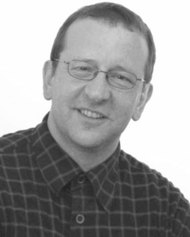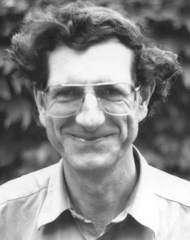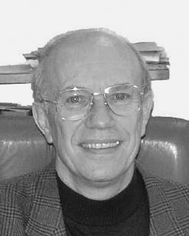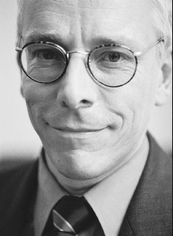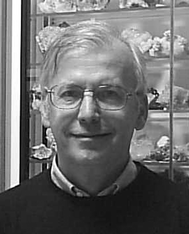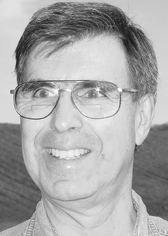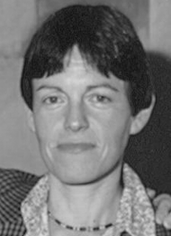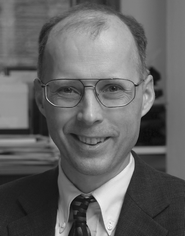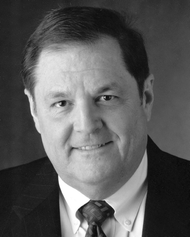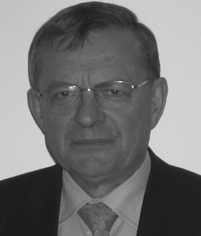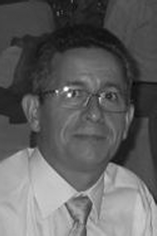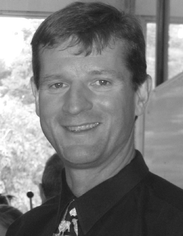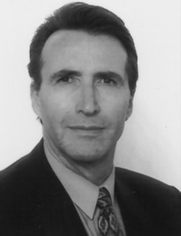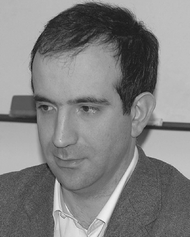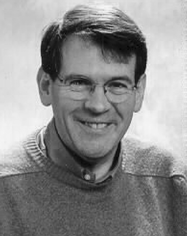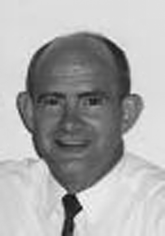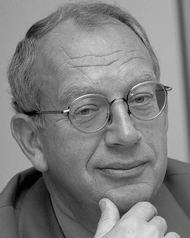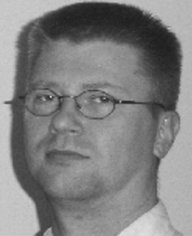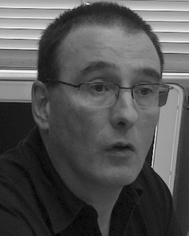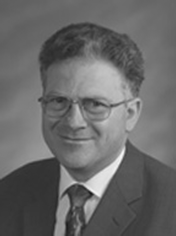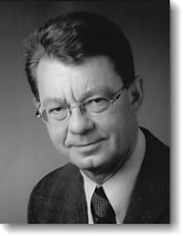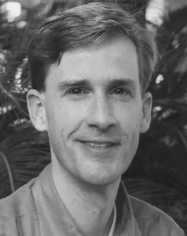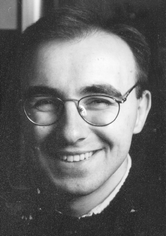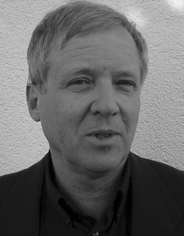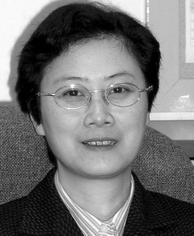DOI: 10.1039/B415244C
(Editorial)
New J. Chem., 2005, 29, 14-19
Editorial
Abstract
This “All Aboard” special issue of New Journal of Chemistry (NJC) contains letters, papers, perspectives and opinions authored by members of the NJC Editorial and Advisory Boards.
Professor Markus Antonietti
Markus studied chemistry in Mainz and obtained his PhD under the supervision of Hans Sillescu. After a habilitation on “Microgels” and a short interval as a professor in Marburg, he headed the Chemistry Department of the Max Planck Institute of Colloids and Interfaces at Potsdam in 1993. His main interests are complex, functional, and self-organizing soft matter systems and hybrids.
Professor Didier Astruc
Didier has been a Full Professor of Chemistry at the University Bordeaux I since 1984, a Senior Member of the Institut Universitaire de France since 1995, the President of the Coordination Chemistry Division of the French Chemical Society since 2001 and a member of the National Committee of the CNRS since 2000. He did his PhD in Rennes with R. Dabard, then his post-doc at MIT, Cambridge, with R. R. Schrock. He spent a sabbatical leave in Berkeley with K. P. C. Vollhardt in 1990–1991 where he wrote his first book on Electron Transfer and Radicals. His fields of interest now range from inorganic chemistry including catalysis and electron-transfer processes to molecular electronics, sensors and nanomaterials.
Professor Pierre Braunstein
Pierre studied chemistry at the Ecole Supérieure de Chimie de Mulhouse, France, and after his Dr Ing. at Université Louis Pasteur Strasbourg, he was a postdoctoral fellow at University College London with Sir R. S. Nyholm and R. J. H. Clark and after his Doctorat d’Etat (ULP), at the Technische Universität Munich with Prof. E. O. Fischer, as a A. von Humboldt Fellow. He is Director of Research with the CNRS and the Director of the Coordination Chemistry Laboratory (UMR 7513 CNRS), Université Louis Pasteur. His main research interests are in the inorganic and organometallic chemistry of the transition and main group elements, including the synthesis of new functional ligands, homogeneous catalysis and nanomaterials. He was an Associate Editor of New Journal of Chemistry from 1990 to 2002.
Dr Matthias Bremer
Matthias studied chemistry at the University of Erlangen-Nuremberg and earned a PhD working on adamantane and carbocation chemistry in the group of Prof. Paul von Ragué Schleyer. He spent a postdoctoral year as an Feodor-Lynen-Fellow at the University of California at Berkeley studying organometallic chemistry with Prof. Andrew Streitwieser. In 1991 he joined Merck KGaA to start research on liquid crystals for device applications. Currently, Dr Bremer is heading a research group in liquid crystal synthesis and is interested in the use of computational chemistry to guide and support experimental work.
Professor Ernesto Carmona
Ernesto is a Professor of inorganic chemistry at the University of Seville, Spain. His research interests include the interaction of small molecules with transition metal compounds; C–H, C–C and other C–X bond activation reactions; transition metal alkyl and carbene complexes, as well as the chemistry of metallocenes of some main group elements.
Professor Kenneth G. Caulton
Ken has been at Indiana University for his entire career as an independent researcher. His work deals with transition metal complexes from all around the transition series, and uses a range of ligand-induced effects, both steric and electronic, to create high reactivity in such complexes. Numerous studies with unsaturated hydrocarbon ligands revealed that π-donor ligands increase metal reducing power, which is the same as π-basicity, and thus can effect contrathermodynamic isomerizations of hydrocarbons to π acidic ligands. These same effects have the expected effects on the equilibrium between dihydride and dihydrogen ligands, and those effects enable hydrogenolysis of later-transition-metal-to-OR and -F bonds, with elimination of H–F or H–OR.
Professor Odile Eisenstein
Odile was born near Paris in 1949. After obtaining her PhD from the University of Paris-Sud (Orsay) under the guidance of Nguyen Trong Anh and Lionel Salem, she was a post-doctoral fellow at the ETH (Zürich) with Jack Dunitz and at Cornell University with Roald Hoffmann. She then took a position as assistant professor at the University of Michigan (Ann Arbor) before returning to France where she became the head of the Laboratoire de Chimie Théorique in 1986. She moved to Montpellier in 1996 where she is currently a research Professor at the CNRS (Directeur de Recherche) and head of a laboratory of theoretical chemistry. Her research interests concern the use computational chemistry in collaboration with experimental chemists for a deeper understanding of d- and f-transition metal complexes. Odile was the Editor-in-Chief of New Journal of Chemistry between 1993 and 2000 and she is currently the Consulting Editor.
Professor John A. Gladysz
John spent his first sixteen years in Galesburg, Michigan, and went on to study chemistry at Western Michigan University, the University of Michigan, and Stanford University. At Stanford, he obtained his PhD degree (1974) with E. E. van Tamelen. He has subsequently held faculty appointments at UCLA (1974–1982), the University of Utah (1982–1998), and the University of Erlangen-Nuremberg in Germany (1998–present). His research interests are wide ranging and include synthetic and mechanistic organometallic chemistry, catalysis, and materials science. One recent highlight involves the synthesis of cage-like molecules that mimic the connectivity, symmetry, and rotary motion of commercial toy gyroscopes.
Professor George Gokel
George earned his B.S. at Tulane University in New Orleans and his PhD (chemistry) at the University of Southern California in Los Angeles. After post-doctoral work with Donald Cram at UCLA and a brief period in DuPont’s Central Research Department, George began an academic career. He has held faculty positions in the chemistry departments at the Pennsylvania State University, the University of Maryland, and the University of Miami. He is currently Professor in the Departments of Chemistry and Molecular Biology and Pharmacology at the Washington University School of Medicine in St. Louis, Missouri, USA. His major interest is in developing synthetic organic model systems that can be used to mimic and to understand biological phenomena. Two areas of current effort involve the development of synthetic ion channels and receptors for cation complexation, particularly involving cation–π interactions. George is currently an Associate Editor for New Journal of Chemistry.
Professor Roger Guilard
Roger is Professor of Chemistry at the University of Burgundy in France. He received the Agregation de Sciences Physiques Degree in 1966 and the Doctorat en Sciences in heterocyclic chemistry from the University of Dijon in 1971. He was a Visiting Professor of Chemistry at the University of Houston in 1985 and again in 1987. He was also Visiting Scientist in China and Japan. His research interests the synthesis and structural characterization of metalloporphyrins and the biomimetic modelling of metalloenzymes; the preparation and physico-chemical characterization of post-transition, lanthanide and actinide metal complexes formed with saturated and unsaturated polyazamacrocycles; grafted and sol-gel immobilised complexes as specific adsorbents for detection (CO, H2) and purification (O2/N2) of gases and functionalised materials (silica-gels, polymer fibers) in solid/liquid extraction processes of heavy metals (Pb, Cd, actinides).
Professor Miguel Julve
Miguel was born in Moncada (Valencia, Spain). He obtained his PhD degree from the University of Valencia in 1981. The subject of his thesis was the complex formation between violurate and first-row transition metal ions. After a two-year post-doctoral post with Professor Olivier Kahn (1981–1983) at the University of Paris-Sud (France), where he worked on the preparation, crystal structure determination and magnetic investigation of oxalato-bridged compounds, he retuned to the Department of Inorganic Chemistry of the University of Valencia as Assistant Professor. Since 1992 he has held a position as Professor of Inorganic Chemistry at the University of Valencia. His main research interests concern coordination chemistry and magnetochemistry including the design of paramagnetic complexes which can act as ligands and their use to build extended magnetic systems whose nuclearity, dimensionality and magnetic properties can be controlled; strong ferro- and antiferromagnetic interactions between metal ions through polyatomic bridges (oxalato, oxamidato, 2,2′-bipyrimidine, malonate, cyanide, for example), single chain magnets, high-spin molecules and spin-canted systems.
Professor Peter C. Junk
Peter graduated from The University of Western Australia in 1984 obtaining a BSc in physical and inorganic Chemistry, and commenced his PhD in organometallic chemistry under the supervision of Professor Colin Raston in the following year. His PhD work involved the use of organometallic reagents in organic syntheses, and also the synthetic and structural aspects of organo- and amido- main group metal complexes.
After four years employed in the petroleum industry, Peter held several postdoctoral positions with Professor Jerry Atwood (University of Alabama), Professor Allan White (University of Western Australia) and Professor Glen Deacon (Monash University). In 1997, Peter gained an academic position at James Cook University as a Lecturer in Inorganic Chemistry and as Senior Lecturer in 1999. He moved to the School of Chemistry at Monash University in 2001, where he holds his current position of Associate Professor.
Professor Jean-Pierre Majoral
Jean-Pierre received his PhD from the Université Paul Sabatier of Toulouse in 1972, then worked as a Postdoctoral fellow with Professor A. Katritzky (University of East Anglia, Norwich, UK) until 1973. He became Directeur de Recherche at the Centre National de la Recherche Scientifique in Toulouse in 1978, where he is presently Directeur de Recherche Classe Exceptionnelle. His research interest is mainly focused on the use of main group elements, especially phosphorus, in different areas of chemistry. At present, he and his research team are involved in the preparation and the study of the properties and applications of macromolecules such as dendrimers and hyperbranched polymers as well as studies of interactions between heavier main group elements and group 4 elements (titanium, zirconium, hafnium) with applications in organic and organometallic chemistry. Jean-Pierre was an Associate Editor of New Journal of Chemistry during 2003 and 2004 and has accepted the position of Editor-in-Chief from January 2005.
Professor Luca Prodi
Luca was born in Bologna, Italy, in 1965. He graduated in Chemistry in 1988 and received his PhD degree in Chemical Sciences in 1992 from the University of Bologna working with Professor Vincenzo Balzani. He is currently Associate Professor in Chemistry at the same University. His research work focuses on the photophysical and photochemical properties of supramolecular systems, with a particular emphasis on the design and characterisation of fluorescent labels and sensors. In this context, he is also interested in the synthesis and study of fluorescent nanoparticles.
Professor Paul Raithby
Paul is Professor of Inorganic Chemistry at the University of Bath, having taken up the post in March 2000, after 19 years on the academic staff at the University of Cambridge. His research interests span aspects of chemical crystallography, the use of synchrotron radiation in structural science, organometallic polymer synthesis and investigations into their opto-electronic and luminescent properties, transition metal carbonyl cluster chemistry, and investigations of structural systematics using statistical and molecular mechanics methodologies. He currently holds a joint appointment with the CCLRC Daresbury Laboratory, where he is developing photocrystallographic techniques.
Professor Jan Reedijk
Jan was born in 1943 in The Netherlands and is currently Professor of Chemistry at the Leiden Institute of Chemistry, Leiden University, The Netherlands. After obtaining his PhD from Leiden University in 1968 and holding a junior lectureship, he lectured at Delft University of Technology until November 1979, when he accepted his present position. During 1993 he was a Visiting Professor at Cambridge University, UK and during 2002 at the University of Louvain-la-Neuve, Belgium. His current research interests include: coordination chemistry of transition-metal ions; bioinorganic chemistry (active-site structure and mechanism; models; metal–DNA interactions); applications of coordination chemistry in catalysis, medicine, ion-exchange, surface chemistry; extended (magnetic; electric) interactions in coordination compounds (dimers, clusters, chains); molecular recognition and intermolecular interactions (catalysis; biomacromolecules).
Professor David N. Reinhoudt
David was born in 1942 in The Netherlands. He studied Chemical Technology at the Delft University of Technology and graduated (suma cum laude) in chemistry in 1969 with Professor H. C. Beijerman. During the period 1970–1975 he worked at Shell where he started the crown ether research program. In 1975 he was appointed as a part-time professor (extraordinarius) at the University of Twente followed by appointment as a full professor in 1978. The major part of his research deals with supramolecular chemistry and technology. Nanotechnology, molecular recognition and non-covalent combinatorial synthesis are the major fields, with applications of supramolecular chemistry e.g., in “lab-on-a-chip”, in the field of electronic or optical sensor systems, catalysis, and molecular materials. David is the scientific director of the MESA+ Research Institute. Since 2002 he has been the chairman of the Board of NanoNed, the Dutch Network for Nanotechnology. He is a member of the Royal Dutch Academy of Sciences, Fellow of the American Association for the Advancement of Science, and Fellow of the Institute of Physics.
Professor Kari Tapani Rissanen
Kari was born in 1959. He studied chemistry at the University of Jyväskylä between 1980 and 1985 where he gained his MSc in Organic Chemistry (1985), and five years later was awarded his PhD in Chemistry (solid state structural chemistry of organic compounds). Between 1985 and 1993 Kari was a chemistry assistant and Assistant Professor at the University of Jyväskylä. From 1993 to 1995 he was Associate Professor, Organic Chemistry at the University of Joensuu, and since 1995 Professor and Head of Laboratory of Organic Chemistry, University of Jyväskylä, Finland. His research interests include structural and synthetic supramolecular and nano and organic chemistry.
Professor Clément Sanchez
Clément, born in 1949, is Director of Research at the French Council of Research (CNRS) and Director of the Laboratoire de Chimie de la Matière Condensée at the University of Pierre and Marie Curie of Paris. He received an engineering degree from l'Ecole Nationale Supérieure de Chimie de Paris in 1978 and a “thèse d'état” (PhD) in physical chemistry from the University of Paris VI in 1981. He did post-doctoral work at the University of California, Berkeley, and he was professor at l'Ecole Polytechnique (Palaiseau) from 1991 to 2003. Clément is currently conducting research at the University Pierre and Marie Curie in Paris, leading a research group of ten scientists, and specialising in the field of chemistry and physical properties of nanostructured porous and non-porous transition metal oxide based gels and porous and non-porous hybrid organic inorganic materials shaped as monolith, microspheres and films. Clément was Editor-in-Chief for New Journal of Chemistry from 2001 to 2004.
Professor Jeremy Sanders
Jeremy was born in London in 1948, obtained his BSc from Imperial College, London, and then moved to Cambridge to work for his PhD with Dudley Williams on lanthanide shift reagents. After a postdoctoral year (1972–1973) in the USA, working on protein NMR, he joined the staff of the University of Cambridge; he was appointed to his present Chair in 1996, and became Head of the Department of Chemistry in 2000. His past NMR interests have covered such diverse topics as two-dimensional NMR and NOE difference spectroscopy, drug metabolism in live cells and the biophysics of biodegradable plastics and spiders’ webs. His current major research interest is in molecular recognition and supramolecular chemistry covering both organic and inorganic systems. He is particularly well known for temugraphicd syntheses of receptors based on metalloporphyrins, for studies of molecular recognition by metalloporphyrins, for the synthesis of catenanes and rotaxanes, and for the recent development of the concept of dynamic combinatorial chemistry. Jeremy was an Associate Editor of New Journal of Chemistry from 1998 to 2000.
Professor Ulrich Schubert
Ulrich was born in Regensburg and studied at the Technical University of Munich, producing his PhD thesis on the reactions of carbine complexes under the supervision of E. O. Fischer. He was a post-doctoral fellow at Stanford University, where he worked with W. S. Johnson. After his Habilitation in Munich, he held a Professorship of Inorganic Chemistry at the University of Würzburg from 1982 to 1994. Since 1989 he has also served in different positions at the Fraunhofer Institute of Silicate Research in Würzburg. In 1994 moved to Vienna where he is currently Professor of Inorganic Chemistry at the Institute of Materials Chemistry, University of Technology. His current research interests are in application-oriented fundamental research on sol–gel processes and the activation of silicon-element bonds by transition metal complexes.
Professor Michael J. Scott
Michael was born in Los Gatos, California and received his Bachelor of Science degree in 1988 from the University of California, Berkeley. He moved to Harvard University to work with Professor Richard H. Holm and was awarded a PhD in 1994. Following a National Institutes of Health Postdoctoral Fellowship with Professor Stephen J. Lippard at the Massachusetts Institute of Technology, he joined the faculty at the University of Florida in the Fall of 1997 as an Assistant Professor of Chemistry and was promoted to an Associate Professorship in 2002. His research interests include the design and construction of tetrapyrrolic and phenolic ligands to address problems in bioinorganic and nuclear chemistry.
Dr Jonathan W. Steed
Jon was born in Wimbledon, UK in 1969. He obtained his BSc and PhD degrees at University College London, working with Derek Tocher on coordination and organometallic chemistry directed towards the synthesis of inorganic drugs and new metal-mediated synthesis methodologies and graduated in 1993. Between 1993 and 1995 he was a NATO postdoctoral fellow at the University of Alabama and University of Missouri, working with Jerry Atwood, where he developed a new class of supramolecular hosts for anions, an area of chemistry that is still part of his current research work. In 1995 he was appointed as a Lecturer at King’s College London where he has built up a reputation for crystal engineering studies using strong and weak hydrogen bonds and malleable coordination interactions and he was promoted to Reader in 1999. He moved as Reader in Inorganic Chemistry to the University of Durham in 2004. Jon is currently an Associate Editor for New Journal of Chemistry.
Professor Michael Veith
Michael was born in 1944 in Goerlitz, Germany. He studied chemistry at the University of Munich, where he received his Diplom–Chemiker degree in 1969 and his doctoral degree in 1971 under the supervision of Professor N. Wiberg. Michael then moved to the University of Karlsruhe, where he started his postdoctoral work with Professor H. Bärnighausen. In 1977 he completed his Habilitation in Inorganic Chemistry and was Privat-Dozent at the University of Karlsruhe until the end of 1978. In 1979 Michael moved to the Technische Universität Braunschweig as a Professor of Inorganic Chemistry. In 1984 he moved to the University of Saarland (Saarbrücken) and became Full Professor. Michael is still at Saarbrücken, although he has held several posts as Visiting Professor: at the University of Bordeaux I (France) in 1981, at the University of Utah (Salt Lake City, USA) in 1987, at the University Paul Sabatier (Toulouse, France) in 1991, and at the University Sophia Antipolis (Nice, France) in 1993. His main research interests are in the field of synthetic and structural chemistry, focusing on molecular compounds containing metal elements.
Professor Vivian W.-W. Yam
Vivian was born in Hong Kong in 1963. She obtained her BSc (Hons) degree in 1985 from The University of Hong Kong and her PhD degree in 1988 from the same university under the supervision of Professor Chi-Ming Che on high-valent metal–oxo chemistry. She was a Lecturer in the Department of Applied Science at the City Polytechnic of Hong Kong (now City University of Hong Kong) for two years before moving back to The University of Hong Kong in 1990. She is currently the Chair of Chemistry and Head of the Department of Chemistry at The University of Hong Kong. Her research interests include the photophysics and photochemistry of polynuclear metal complexes and clusters with special emphasis on metal alkynyls, chalcogenides, and chalcogenolates, supramolecular chemistry, and molecular metal-based functional materials for spectrochemical and luminescent sensing, molecular recognition, optoelectronics, optical memory and molecular devices.
| This journal is © The Royal Society of Chemistry and the Centre National de la Recherche Scientifique 2005 |

